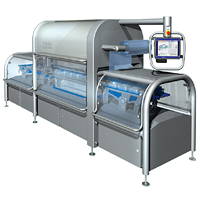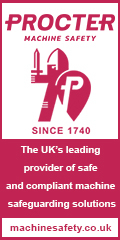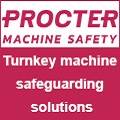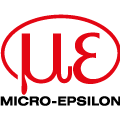
Posted to News on 27th Sep 2006, 19:26
Ethernet servo drives speed food tray sealing
Ishida's latest QX-1100 tray sealer employs servo motors throughout, controlled using Baldor's Ethernet-compatible MicroFlex e100 drives, which results in sealing rates twice as high as that offered by competitive machines.

Ethernet-compatible servo motor drives are underpinning a breakthrough in the speed and flexibility of food tray sealing. The availability of this new generation of networked motion control technology provided the platform for Ishida to re-think its machine control system architecture and achieve step-change improvements in speed.
Instead of the combination of servo and pneumatic actuation axes used on previous machines, Ishida's latest QX-1100 tray sealer employs servo motors throughout, controlled using Baldor's Ethernet-compatible MicroFlex e100 drives. The speed and predictability of movement provided by the servos allows Ishida to dramatically accelerate the throughput for this form of food processing automation, allowing sealing speeds of up to 200 trays/minute - up to twice as fast as many existing alternatives.
The 100 Mbits/second speed of the network also dramatically simplifies the control system - allowing the machine's complex motion to be managed by a single controller with extremely simple cabling, thereby eliminating several multi-axis motion controllers and dozens of wires that would otherwise be required.
In total, 12 servo motor axes are used in the QX-1100: six control the machine's dual infeed lanes - which operate asynchronously for flexibility; two drive lugged chains that provide precise movement of the food trays through the filling process; and four more control take-off and spacing conveyor functions, to collect and precisely position the appropriate number of trays before entry into the sealing area.
When the feed conveyor is populated, two axes are used to clamp and move the trays into the machine. A vertical axis then raises the trays to the sealing tool, which heat-seals the film lids on top. The film roll - which can be either clear film or film printed with position-sensitive instructions and graphics - is controlled via a further servo axis. Finally, two servos control outfeed from the machine, and convergence into a single lane for downstream processes such as check-weighing.
The increase in process speed comes from a number of techniques. First, the sheer speed of servo motors allows speed gains. On the vertical sealing axis, for example, closed-loop servo control provides both a raw increase in movement speed and additionally allows motion profiles to be applied to the up and down movements - with the benefit of very fast acceleration back to the home position following sealing. Overlapping movements are also extensively employed, with the sealing axis starting its raising operation as the gripper is starting to release, for instance. With previous pneumatic actuation axes, machine movements typically happened in sequence, after a limit switch at the end of a stroke was activated.
Standard Ethernet network
Ishida chose to implement the machine using a standard Ethernet network. The drives are controlled by sending movement commands to axes as required, with predictability ensured by simple mechanisms including isolating the machine network to provide a known environment, and adding some collision avoidance software.
As a move is required, the embedded machine controller - Ishida's own-design hardware - issues the relevant motion commands using Baldor's Mint language. These commands include basic movements such as absolute and relative moves with optimized profiles such as S ramps, and jog commands for conveyor control. The availability of simple-to-use keywords in Mint, for all the movements required, were particularly valuable for Ishida when developing this new machine, helping to reduce the software effort.
"The high-level nature of the Mint language was a phenomenal help in minimising the timescales for this new-generation machine," says Ian Hodgson, Chief Software Engineer at Ishida Europe. "The language reduced what could have been a daunting software project to a predictable task taking around a month in total, and also giving us a very modular software which can be upgraded with ease. Baldor even added a new command into the Mint library for us, to improve the efficiency of communication with axes over a standard Ethernet network."
Another key facet of the Ethernet-connected control system architecture is simpler wiring. The 12 drives are dispersed in two control panels, and connect to the controller via a simple network cabling arrangement and some hubs. This greatly simplifies the electrical system building effort required, allowing the sophisticated new machine to compete well with lower performance alternatives.
"With conventional motion controller hardware we could easily have required four separate controllers to achieve the same result," adds Hodgson. "Not to mention the huge amount of wiring that would have been necessary for the 12 axes and encoders. We simply could not have produced the machine in the same compact footprint, and at same cost, without this new generation of Ethernet motion control technology."
Want the latest machine building news straight to your inbox? Become a MachineBuilding member for free today >>

















